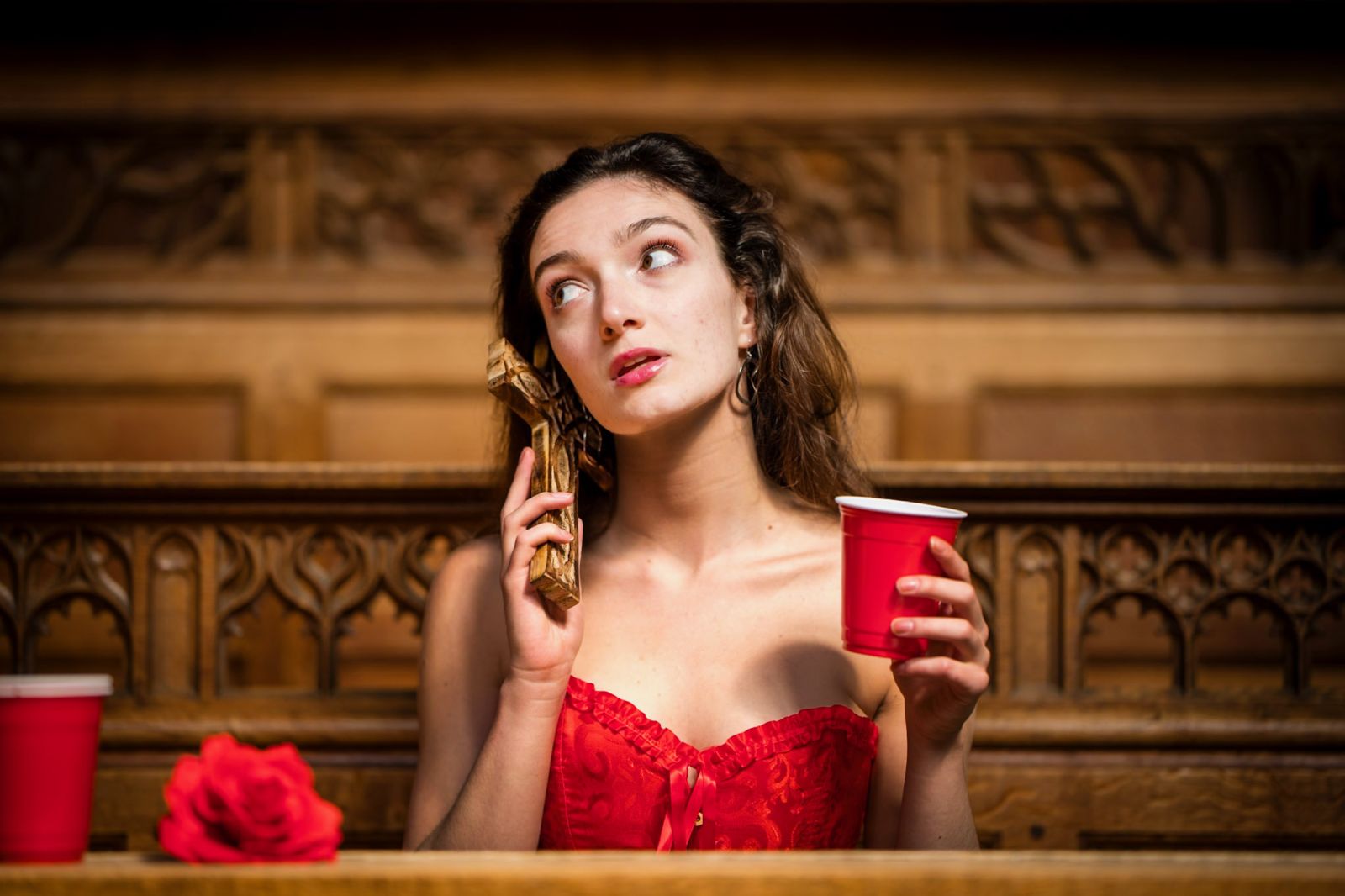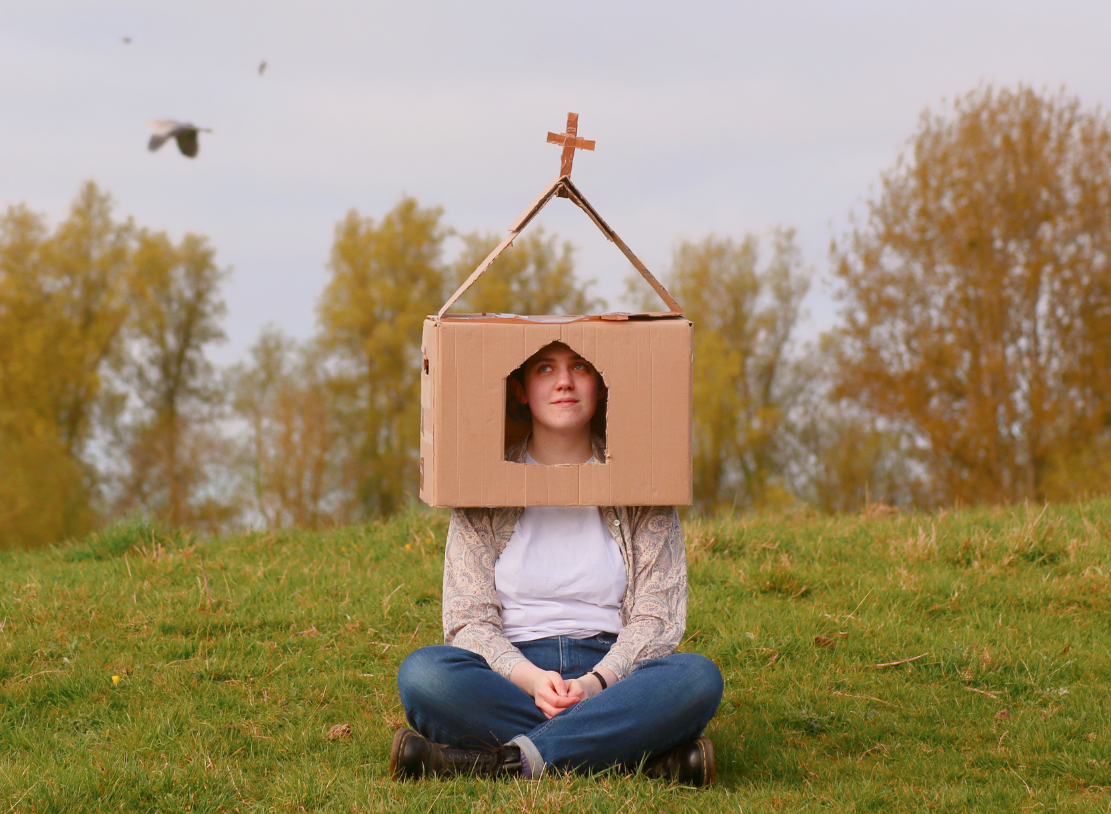Emily Knutsson on medieval shows: 'It’s such a whimsical field'
Comedy may largely be dominated by modern-day issues and dilemmas, but there’s a definite whiff of the Middle Ages permeating this year’s Fringe programme. Jay Richardson gets all medieval on your ass with a round-up of chivalrous shows

Monty Python And The Holy Grail casts an almighty shadow over depictions of medieval history in comedy, a giant metaphorical Trojan Rabbit catapulted over the castle ramparts at any mead-emboldened performers arriving at the Fringe. Yet noble quests still inspire the most motley of jesters, with former Edinburgh Comedy Award-winner Adam Riches resurrecting his Game Of Thrones-era Sean Bean to read Le Morte d’Arthur; Bebe Cave forswearing all suitors as a medieval maiden choosing Jesus and mysticism in Christbride; Spruce Moose Comedy playing disgraced monks-turned-gallants to a bardcore backing in Knightclub; and Madeleine Rowe reprising 2024 Fringe sleeper hit Knight, Knight.
Minneapolis-based clown Rowe is committed to ‘stupidity’ in their one-person retelling of the sword-in-the-stone story, ‘having envisioned myself looking ridiculous in the costume, then begun thinking about a knight that became king and wasn’t supposed to.’ As with the Pythons, Rowe’s production budget doesn’t stretch to a genuine steed. Yet with little more than a child’s toy, an appeal to audiences’ imaginations and their willingness to participate, Rowe has transformed the romantic myth into ‘a relationship between a man and a horse.’
With shades of Equus, the show supplements its laughs with surprising tenderness. ‘The audience are standing up, shouting and crying for a hobby horse they met five minutes before,’ marvels the Gaulier-trained performer. ‘It’s so exciting for a clown when people are so into a story that they feel they can change it.’
.jpg)
The period undoubtedly encourages creativity, agrees Emily Knutsson, a Cambridge Footlight whose Fringe comedy debut, Me And My Year Of Casual Monasticism, is a loosely autobiographical account of a student negotiating sex and relationships through medieval satire and the teachings of St Benet. ‘There’s so little information compared to other times, it allows the historian to be a storyteller and make their own conclusions,’ the New Yorker argues. ‘It’s such a whimsical field of study.’
Prompted by a break-up, a ‘renaissance of artistic growth’ during a trip to the Vatican, and Heinrich Lossow’s painting ‘The Sin’ (portraying a monk and nun copulating during an orgiastic dinner in the Papal Palace in 1501), Casual Monasticism’s protagonist Mary ensures that Pope Leo ‘isn’t the only American taking the Catholic Church by storm this year,’ Knutsson declares.
Rediscovering herself in the monastic cloisters of Cambridge, Knutsson has instilled in Mary a passion for the chaos of the time: ‘the absurdities, the manuscripts with dragons, phoenixes and trees shaped like penises, so much amazing wonderment, so many fascinating women, before the yoke of society came down and a lot of the mysticism was squashed. I’m trying to turn medieval history into pop culture. Life is too short not to find the fun and magic in penis trees.’
Similarly, Luke Connell isn’t so interested in talking about kings and battles in his stand-up. A professor of medieval French literature at Durham University and regular act at the Nerds Just Wanna Have Fun night at The Stand in Newcastle, his preoccupation is with weird and wonderful depictions of animals in medieval art and tales of eccentrics that have endured for centuries. Connell says some people assume that the routines are ‘going to be boring because it’s medieval. But once they see the manuscript images, they can see the emotion and invention in them.’

Typically, 13th-century imaginations were working overtime with limited observational evidence, conceiving of nature as a craftsperson, he explains. This resulted in the same combinations of body forms for different species, with lots of sea creatures equivalent to land creatures. ‘So sea pigs,’ says Connell, ‘but also sea monks: fish with tonsure haircuts on their head. My favourite is the octopus. They knew it as a very dangerous creature, snatching sailors off ships. But often it was drawn like a dolphin, with big arms and gym biceps for grabbing humans.’
In Bloody Marvellous, Connell also enthuses about Eilmer Of Malmesbury, a ‘flying’ Benedictine monk of the 11th century who launched himself from the top of his abbey with a pair of self-made wings, ‘caught the wind, flew for a bit, crashed to earth but survived. Afterwards he said that he should have made a tail like a bird’s, because that’s how they balance. Rather than being a top-to-bottom bad idea, he’d executed it brilliantly because he only broke his legs.’
As a lapsed Catholic whose ‘incapacity to write about anything that doesn’t bring medieval history to the forefront’ is bound up with lingering religious guilt, Caitriona Dowden has also been drawn to the period’s mavericks and rebels. Having begun comedy just before the pandemic, the Oxford PhD student and Chortle Best Newcomer nominee’s latest Fringe hour, Dance Like Everyone’s Dancing, investigates the 1518 Strasbourg dancing plague. Popular theories for the mass outbreak of dancing mania, with victims jerking and jitterbugging themselves to death, include stress-induced mass hysteria, food poisoning and the consumption of psychotropic fungi.
.jpg)
However, Dowden prefers a Footloose-style scenario, that it was ‘some kind of social protest, because the clergy saw dancing as a sinful act and it was associated with female impropriety. We often see the past as really uniform and talk about medieval people as if they’re a monolith. So I like examples of anyone pushing against the norms, breaking out from what we imagine them to be like.’
Despite hiding inside a cardboard box as her character The Anchoress (a reclusive hermit bricked up in a cell, withdrawing from the world to focus on religious thoughts), Dowden is also investigating how divination with animal entrails can be used to predict modern-day elections and what our medieval ancestors can teach us. ‘Sometimes I worry that we overly romanticise the past or use it as escapism to try to not think about the state of the world,’ she reflects. ‘People have thought that society was in decline and we were living in The End Times for thousands of years. So we should draw some comfort from that; although I’m still evaluating how successful I’ve been on this feelgood component.’
Knight, Knight, Underbelly George Square, until Sunday 24 August, 7.20pm; Me And My Year Of Casual Monasticism, Greenside Riddles Court, until Saturday 23 August, 8.40pm; Luke Connell: Bloody Marvellous, Laughing Horse Brass Monkey, until Sunday 24 August, 2.45pm; Caitriona Dowden: Dance Like Everyone’s Dancing, PBH Carbon, until Sunday 24 August, 2.10pm; PBH Banshee Labyrinth, Tuesday 12 August, 6.05pm; Wednesday 13 August, 6.25pm.